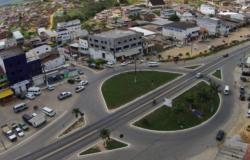As part of March’s actions related to women’s health, the State Department of Health (SES) launched this week the “Epidemiological Bulletin of the State of Rio Grande do Sul: violence against girls and women aged 10 to 59”. The data reveals that, between 2018 and 2022, this female audience represented 78% of victims of violence reported in Rio Grande do Sul.
Violence appears as a problem on the global public health agenda, characterized as an extreme form of gender inequality. To prepare the bulletin, produced by the technical team of the Life Cycle Policies Division of the Department of Primary Care and Health Policies (DAPPS), data from the Notifiable Diseases Information System (Sinan) were used.
The document brings together a series of statistics and sociocultural insights that seek to support the work of health professionals in all areas of assistance in the Unified Health System (SUS). Taking into account the recent historical context, the drop in the number of notifications between 2019 and 2020 is notable, which may be related to the Covid-19 pandemic and restriction measures. The reduction in users’ access to health services directly affects the result, since notification is compulsory, but depends on the initiative of the health professional to be included in Sinan.
According to the population rate, those most affected by violence are indigenous people, showing the highest numbers in all the years analyzed. Between 2018 and 2021, the black population was the one that suffered the most violence, and in 2022 it was the yellow population that received the most reports of violence. As for the age group, girls aged 10 to 14 represent the biggest victims among the notifications made in the State during all years of the historical series analyzed. Of these, indigenous, black and yellow girls and women are the most affected by sexual violence.
In relation to the place where violent acts occur, the residence is the most frequent, which indicates that domestic violence still exceeds the other numbers in Rio Grande do Sul. During the historical series there were 63,567 cases, with the prevalence of violence in urban area, pointing to the possible underreporting of the same index in relation to rural women. Low education is also associated with reports of violence, highlighting that the less educated, the more vulnerable these women are.
Among the types of violence categorized in the bulletin, physical violence is the most easily recognized by society and health professionals, given the most explicit way in which it manifests itself. This data, according to the analysis of the material, is related to the understanding of the concept of violence – which often disregards psychological violence, property violence, negligence, among others.
Almost half of the reports of violence (42.5%) are recorded in tertiary care, in large hospitals and in specialized care, indicating that they have reached a severe level of severity. In second place in the number of records is secondary care (31.6%) and in third place is primary care (19.6%). These numbers show that although primary care is where the greatest connection with the population occurs, it is still the one that reports the least cases of violence.
This scenario, the bulletin points out, means that there is still a huge challenge between the reality faced by women in Rio Grande do Sul and the work of health professionals who work at the forefront, and it is essential to train and stimulate primary health care so that it is sensitive to violence against women. girls and women, identifying signs early on.
Legal abortion
The publication also includes a section on legal abortion in the State, presenting data on pregnancy termination procedures in the cases provided for by law. Rio Grande do Sul has seven SUS reference services for abortions. Between 2019 and 2022, 428 legal interruptions were carried out as a result of sexual violence. The social representation observed in this scenario is women with secondary and higher education levels, which shows that the profile of women victims of sexual violence in the State is not the same as those who access legal termination of pregnancy. This discrepancy would be justified by the lack of access to information about rights and makes actions to strengthen and direct guidance in primary health care urgent.
The document reflects violence against girls and women as a problem that goes beyond management levels (federal, state and municipal) and seeks to give visibility to the real indicators. As an instrument to support future interventions, the bulletin aims to ensure agendas for the protection and expansion of universal and comprehensive access to health services for girls and women who are victims of violence.
Text: Ascom SES
Edition: Secom






